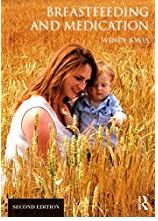Having nursed my husband post-op this week the topic of laxatives is at the fore front of my mind particularly after opioid analgesics! But also very relevant post birth particularly after a c section or instrumental delivery
What is constipation:
It’s likely to be constipation if:
- you have not had a poo at least 3 times during the last week
- the poo is often large and dry, hard or lumpy
- you are straining or in pain when you have a poo
- You may also have a stomach ache and feel bloated or sick.
The most common causes of constipation include:
- not eating enough fibre, ( fruits, vegetables and cereals)
- not drinking enough fluids
- not moving enough and spending long periods sitting or lying down
- being less active and not exercising
- often ignoring the urge to go to the toilet
- changing your diet or daily routine
- a side effect of medicine especially opioid painkillers
- stress, anxiety or depression
Constipation is also common during pregnancy and for 6 weeks after giving birth.
Even if you decide you need medication you do need to make changes to your diet and toilet habits which can be particularly challenging with a new baby who needs you 24 hours a day and under whom you may be stuck feeding or sleeping when you need “ to go”.
Management of constipation
- In the management of short-duration constipation (where dietary measures have proved ineffective) start with a bulk-forming laxative, ensuring adequate fluid intake. Eg, ispaghula husk (Fybogel ™).
- If stools remain hard, add or switch to an osmotic laxative. Osmotic laxatives increase the amount of water in the large bowel, either by drawing fluid from the body into the bowel or by retaining the fluid they were administered with. Eg Lactulose, Macrogols(Movicol™)
- Stool softeners act by decreasing surface tension and increasing penetration of intestinal fluid into the faecal mass Eg docusate (DulcoEase™)
- If stools are soft but difficult to pass or you feel inadequate emptying, a stimulant laxative should be added. Eg Senna (Sennokot™), Bisacodyl (Dulcolax™)
- Glycerol suppositories act as a lubricant and as a rectal stimulant by virtue of the mildly irritant action of glycerol.
Laxatives and breastfeeding
- Bulk forming laxatives just add to the bulk of faeces and are not absorbed into the body
- Osmotic laxatives just increase the volume of water in the faeces and are not absorbed into the body or breastmilk. Anecdotally some babies do develop loose bowel motions but there seems to be no reason for this.
- Stool softeners are poorly orally bioavailable. There are no studies on passage into breastmilk but it is believed to be minimal and should not affect the baby. (Hale 2023)
- Senna : In one dated uncontrolled study of 23 women who received Senokot (100 mg containing 8.602 mg of sennosides A and B), no sennoside A or B was detectable in their milk.[ Werthmann MW Jr, Krees SV. Quantitative excretion of Senokot in human breast milk. Med Ann Dist Columbia. 1973;42:4–5.] Of 15 mothers reporting loose stools, two infants had loose stools. Several controlled studies using modern senna products found no effect on the infant (LactMed 2023). Senna should only be used short term to treat constipation
- Bisacodyl: Bisacodyl is not absorbed from the gastrointestinal tract, and its active metabolite, which is absorbed, is not detectable in breastmilk. Bisacodyl can be taken during breastfeeding and no special precautions are required. (LactMed 2023). It’s oral bioavailability is less than 5% (Hale 2023)
See also https://www.sps.nhs.uk/articles/using-laxatives-during-breastfeeding
SPS Using laxatives and breastfeeding
Movicol now says that it can be used during pregnancy and breastfeeding! https://www.movicol.co.uk/
Bristol Stool Chart
Type 1: Separate hard lumps (hard to pass)
Type 2: Lumpy, hard, sausage-shaped.
Type 3: Sausage-shaped with cracks on the surface.
Type 4: Sausage-shaped or snake-like; smooth and soft.
Type 5: Soft blobs with clear-cut edges (easy to pass)
Type 6: Fluffy pieces with ragged edges; mushy.

